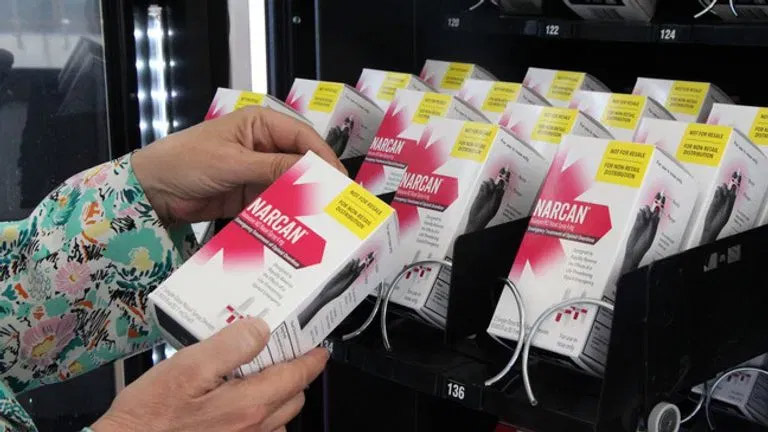It’s been eight years since Doug Griffin lost his 20-year-old daughter Courtney to a fentanyl overdose. Her story, and Griffin’s loss, were featured during President Joe Biden’s Feb. 7 State of the Union address as he spoke about the toll of the opioid crisis in the United States.
Griffin, the president said, is not alone in this grief — more than 100,000 Americans died of a drug overdose in 2021, according to the Centers for Disease Control and Prevention. Fentanyl, the potent synthetic opioid, has quickly become the leading cause.
In his address, Biden called for “strong penalties to crack down on fentanyl trafficking” — a line that garnered bipartisan applause during his State of the Union address. But the call drew criticism from harm reduction advocates who say a more punitive approach could hurt their efforts.
Josh Swatek, head of the New Mexico Health Department Harm Reduction Program, spoke to the PBS NewsHour’s Nicole Ellis about how his organization is using harm reduction strategies to tackle the crisis.
Watch the conversation in the player above.
Harm reduction “means meeting people where they’re at” with regard to substance use, Swatek said. In many cases, that entails providing resources and support based on the individual’s needs.
According to CDC data from 2020, New Mexico ranks 11th in the nation for drug overdose deaths. Amid the growing crisis, in Feb. 2022, the state signed into law a harm reduction bill that significantly expanded the health department’s ability to address the opioid crisis and potential overdoses.
READ MORE: Senate hearing on fentanyl outlines international supply chain that brings drug to U.S.
For New Mexico, a key part of the harm reduction approach is distributing fentanyl test strips and the overdose reversal drug naloxone. Fentanyl is potent and can result in accidental overdoses. “If people use fentanyl test strips, then they’re aware that fentanyl might be in their substances, so they can change their behavior, they can use less. They might not use that batch at all,” Swatek said.
In the last year, Swatek said, over 3,400 overdose reversals were reported to the harm reduction program in New Mexico. “We know just from that data, which we believe is an undercount, that this is an effective program,” he said, touting his program’s 58 sites and mobile facilities.
He says the goal of harm reduction is to “make sure that folks have as low barriers as possible to access lifesaving naloxone and other harm reduction services that our program offers.”
Swatek’s perspective echoes a national push to make these opioid overdose antidotes more accessible.
Presidential administrations have long supported wider naloxone distribution. Last year, the Biden administration allocated nearly $1.5 billion to states and territories to help address the opioid crisis, including via harm reduction measures.






